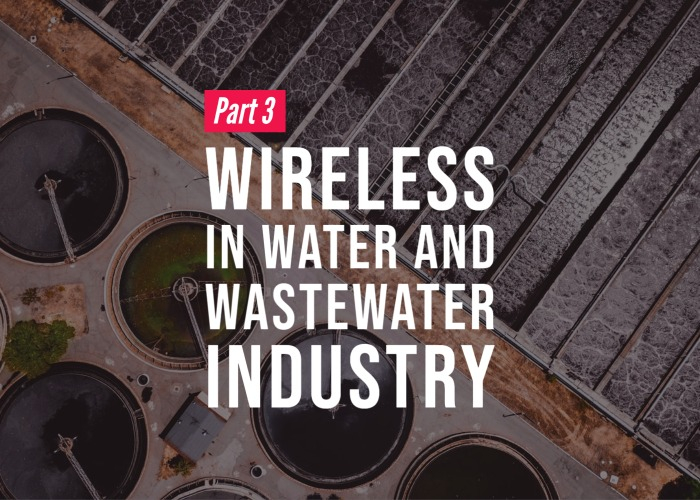Wireless in the Water and Wastewater Industry

Wireless in the Water and Wastewater Industry
Connectivity in widespread water and wastewater applications can present challenges that are unique to the industry.
Water and wastewater applications can be wide-spanning in both service area and age. The equipment and protocols used can vary based on factors including environment and distance. This has led to a mix of industrial protocols, equipment age, and regulatory requirements. New equipment – a necessary addition for any application – brings with it new complications: What does it need to connect to, and how can those connections be made?
Meanwhile, equipment added needs to have a quick installation time and high levels of reliability to ensure continuous service.
Protocol connectivity
This is a series about wireless technology, but the first step in connectivity is ensuring harmony between an application’s protocols. That can be daunting in water and wastewater applications, but the issue can be addressed by protocol converters.
Protocol gateways can help connect equipment that uses common water and wastewater protocols, including DNP, Modbus® and Modbus TCP/IP, EtherNet/IP™, HART, and others. If your application uses some DF1 equipment, modules can help connect the legacy devices while serving as a communication bridge during a phased modernization. (We love a water and wastewater win-win around here.)
WLAN solutions
WLAN radios provide the wide-ranging connectivity and reliability that water and wastewater applications need. The mish-mash of equipment coupled with a service area that could change frequently in the future means that radios that can quickly integrate into your network are a must.
WLAN solutions serve several purposes for the water and wastewater industry, including:
∙ Enabling workers on a W/WW campus
∙ Allowing you to connect equipment like water clarifiers without resorting to cables
∙ Easily connecting to similar equipment across a utility’s service area
If your application needs higher-speed updates, opt for Ethernet radios – ideally ones that integrate directly with your EtherNet/IP or Modbus PAC.
Cellular connectivity
Cellular solutions have a lower installation cost than some options and also can benefit from the existing environment.
The global cellular infrastructure has ensured that this type of connectivity can be used anywhere. Like WLAN radios, cellular gateways are extremely scalable, ensuring future equipment can use the same type of technology – and quickly. Cellular solutions’ connectivity can also allow you to benefit from remotely accessing the equipment – no travel required. (See, another win-win!)
Learn more about Industrial Wireless Solutions.
This is Part 3 in a five-part series focused on how wireless connectivity is used in a variety of automated applications! Check out Parts 1 and 2, and stay posted for the final 2 installments!

